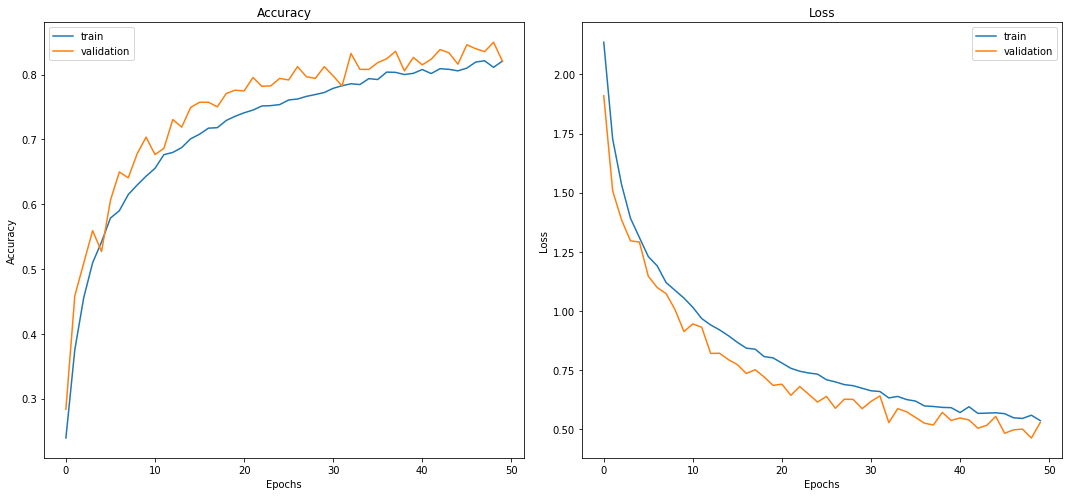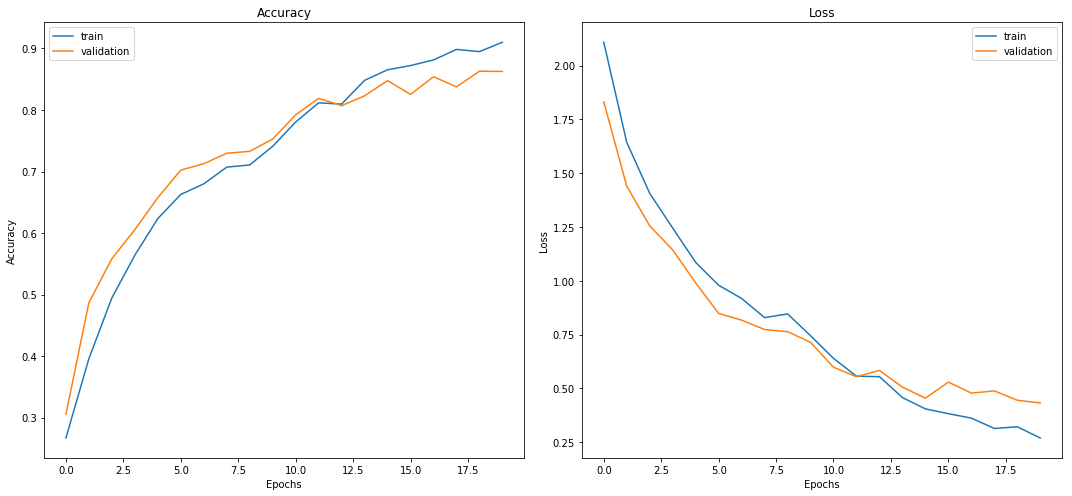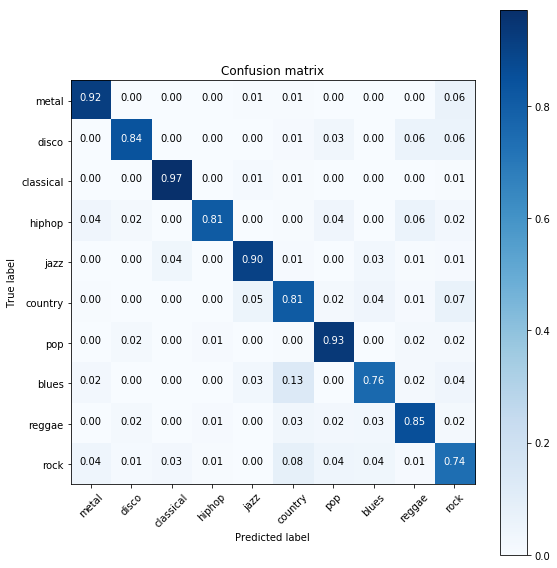Music Genre classification using Convolutional Neural Networks. Implemented in Keras
And how to get the dataset?
- Download the GTZAN dataset here
Extract the file in the data folder of this project. The structure should look like this:
├── data/
├── genres
├── blues
├── classical
├── country
.
.
.
├── rockTo run the training process in the gtzan files:
$ cd src/
$ python gtzan.py -t train -d ../data/genres/After the execution the model will be save on the models folder. To run in a custom file, you should run as follow:
$ cd src/
$ python gtzan.py -t test -m ../models/YOUR_MODEL_HERE -s ../data/SONG_TO_TEST_HEREtl;dr: Compare the classic approach of extract features and use a classifier (e.g SVM) with the modern approach of using CNNs on a representation of the audio (Melspectrogram). You can see both approaches on the nbs folder in the Jupyter notebooks.
For the deep learning approach:
- Read the audios as melspectrograms, spliting then into 3s windows with 50% overlaping resulting in a dataset with the size 19000x129x128x1 (samples x time x frequency x channels)**.
- Shuffle the input and split into train and test (70%/30%)
- Train the CNN and validate using the validation dataset
** In the case of the VGG, the channel need to have 3 channels
In the src folder there is an file gtzan.py which you can use to tune your program parameters. The graphics presented here were constructed with the default setting of this program.
You can tune the model (Add more layers, change kernel size or create a new one) by editing the file src/gtzan/model.py.
To compare the result across multiple architectures, we have took two approaches for this problem: One using the classic approach of extracting features and then using a classifier. The second approach, wich is implemented on the src file here is a Deep Learning approach feeding a CNN with a melspectrogram.
You can check in the nbs folder on how we extracted the features, but here are the current results for a k-fold (k = 5):
| Model | Acc | Std |
|---|---|---|
| Decision Tree | 0.502 | 0.03 |
| Logistic Regression | 0.700 | 0.013 |
| Random Forest | 0.708 | 0.032 |
| SVM (RBF) | 0.762 | 0.034 |
For the deep learning approach we have tested two models: CNN 2D and a VGG16-like model. Reading the file as melspectrograms and split the 30s into 3s files with 50% overlaping, using a training split of 70% for train and 30% test. The process was executed 3x to ensure it wasn't a luck split.
| Model | Acc | Std |
|---|---|---|
| CNN 2D | 0.832 | 0.008 |
| VGG16 | 0.864 | 0.012 |


